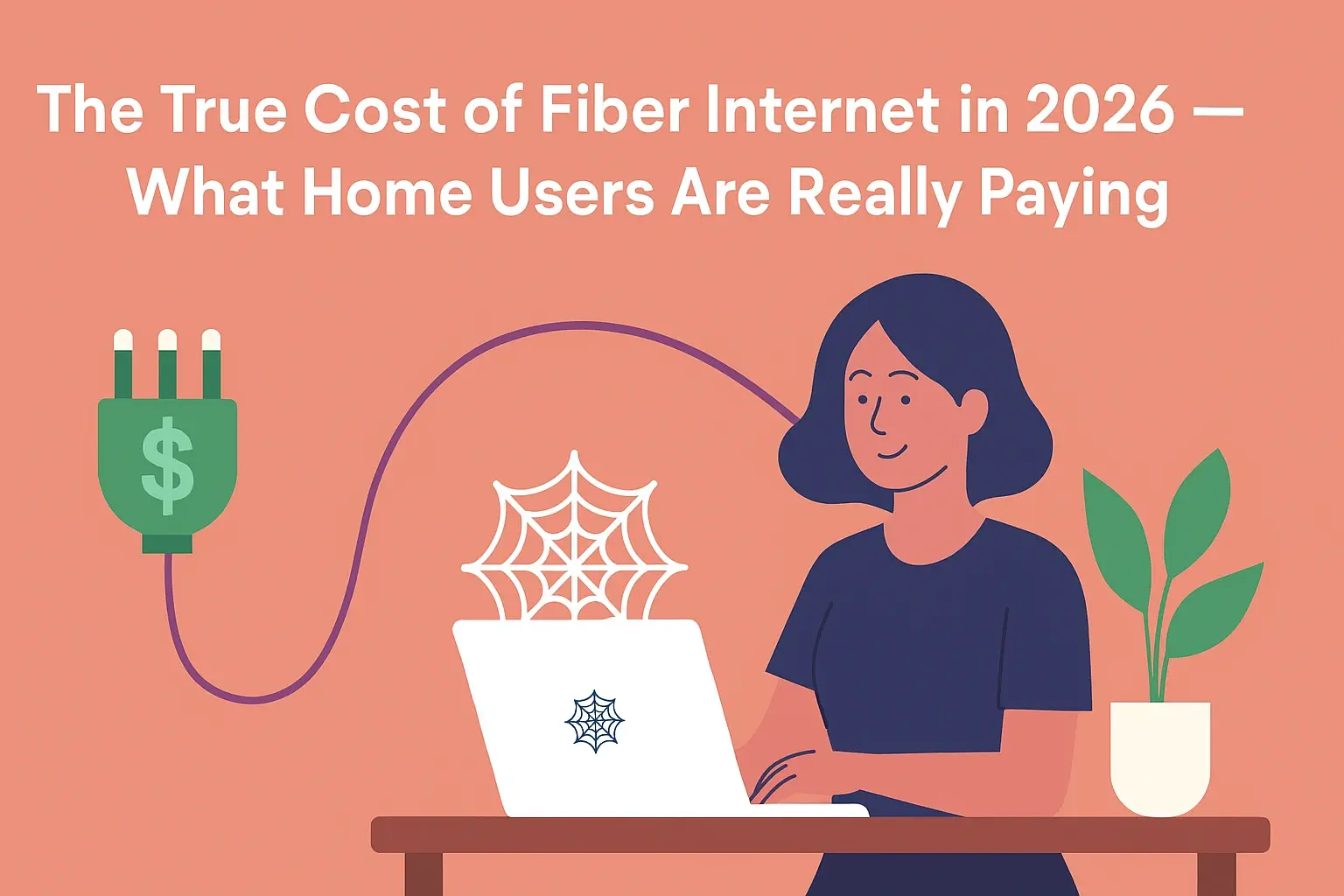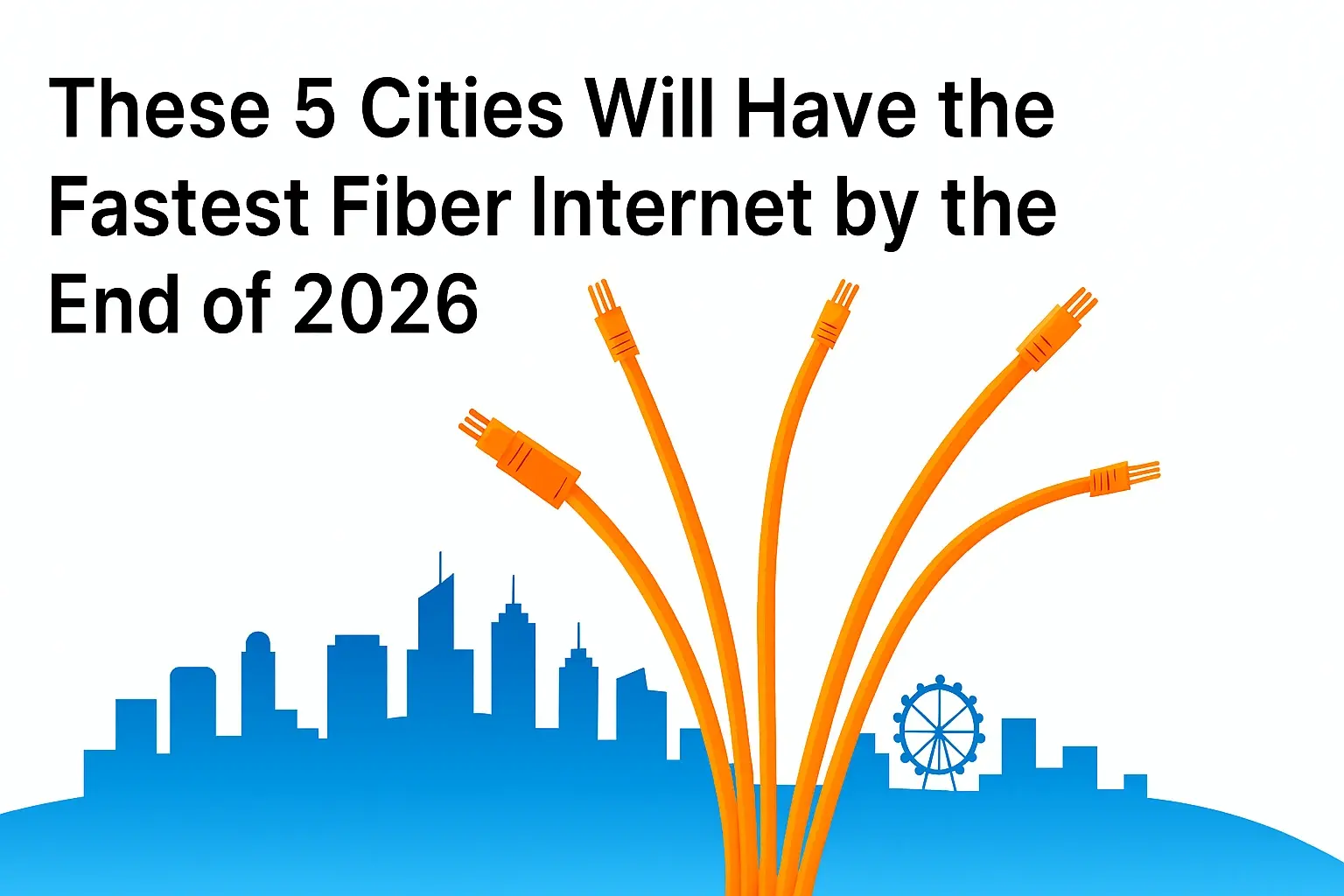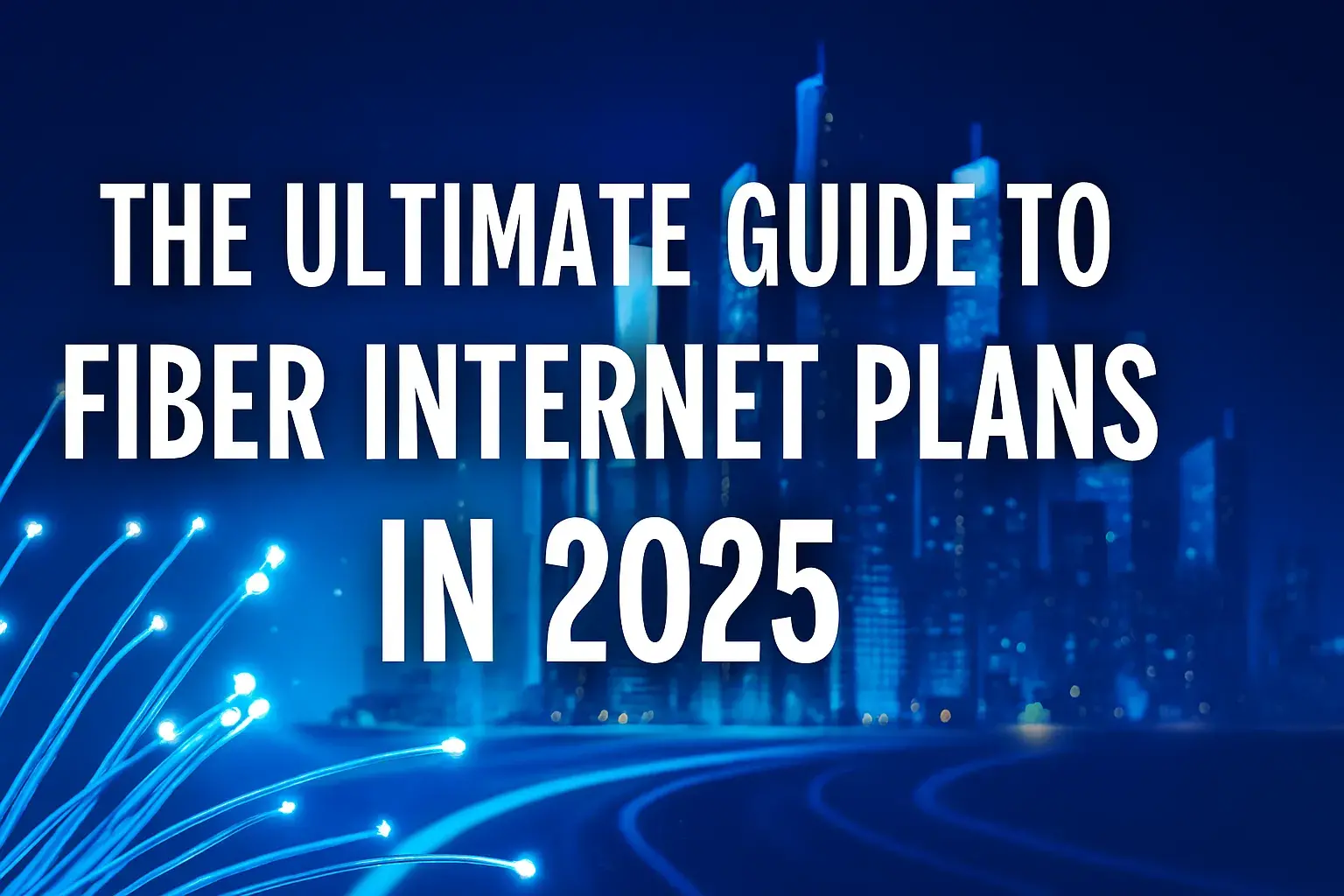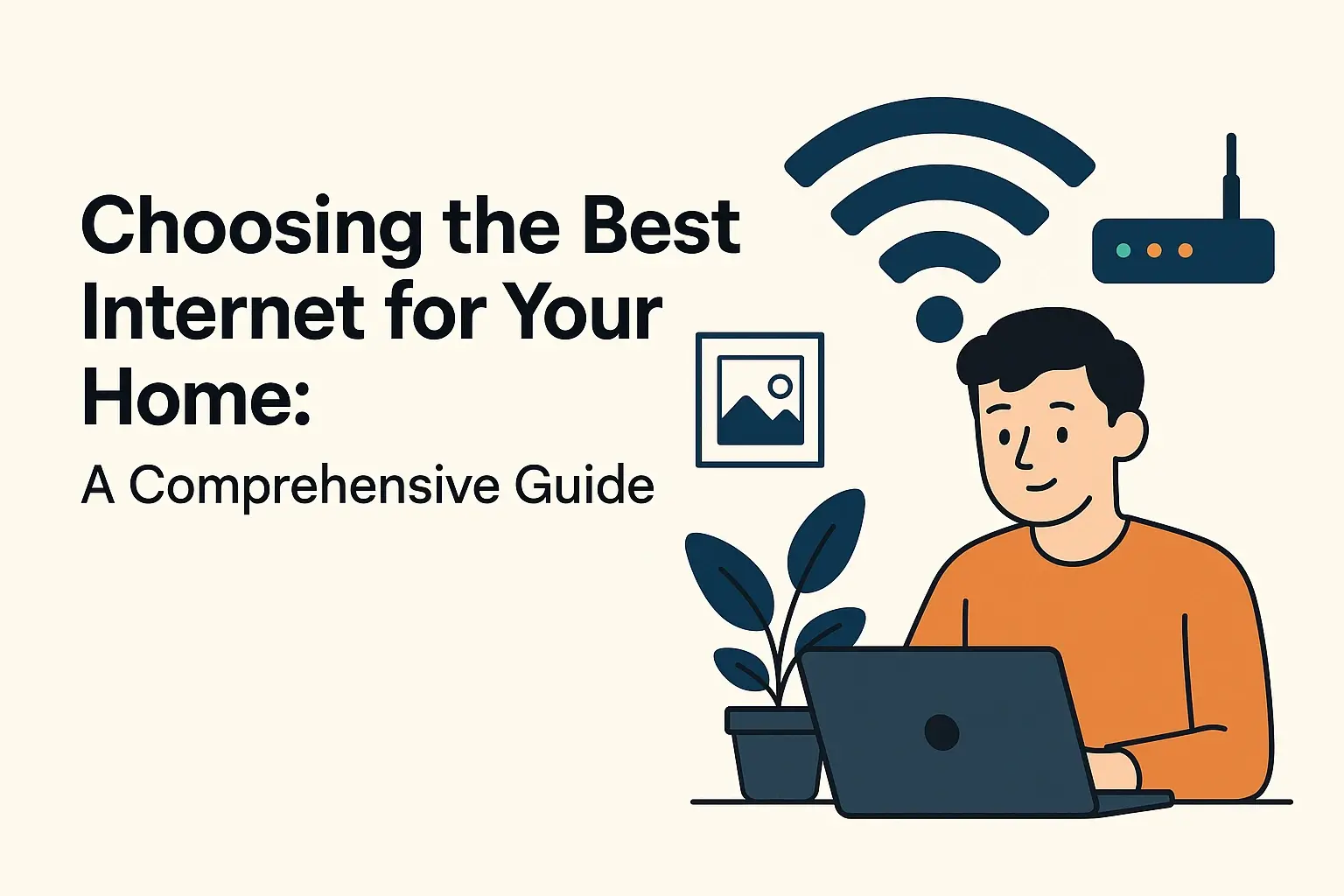Mastering Fiber Internet: Benefits & Advantages

Unlock unparalleled speed, reliability, and future-proofing with fiber internet. This comprehensive guide delves into the transformative benefits and advantages of fiber, empowering you to make an informed decision for your home or business in 2025 and beyond. Discover why fiber is the definitive next step in connectivity.
What Exactly is Fiber Internet?
Fiber internet, also known as fiber-to-the-home (FTTH) or fiber-optic internet, represents the pinnacle of internet connectivity. Unlike traditional broadband technologies that rely on copper wires, fiber utilizes thin strands of glass or plastic to transmit data in the form of light pulses. This fundamental difference in transmission medium is what unlocks its extraordinary capabilities. Light travels at incredible speeds, and by encoding data into these light signals, fiber optic cables can carry vast amounts of information over long distances with minimal signal degradation. This leads to significantly higher speeds, lower latency, and a more stable connection compared to older technologies. As of 2025, fiber optic networks are rapidly expanding, becoming the gold standard for high-performance internet access for both residential and commercial users seeking the ultimate online experience.
The Core Benefits of Fiber Internet
The advantages of fiber optic internet are numerous and impactful, fundamentally changing how we interact with the digital world. These benefits extend beyond mere speed, encompassing reliability, future-proofing, and enhanced performance for a wide array of applications. Let's explore the foundational benefits that make fiber the superior choice.
Unmatched Speed and Performance
The most lauded benefit of fiber internet is its sheer speed. While copper-based technologies struggle to reach gigabit speeds consistently, fiber optics can easily achieve symmetrical download and upload speeds of 1 Gbps, 2 Gbps, or even 10 Gbps and beyond. This means downloading large files, streaming 8K video content, and uploading high-resolution media happen almost instantaneously. In 2025, with the increasing demand for bandwidth-intensive applications like virtual reality (VR), augmented reality (AR), and high-definition video conferencing, these speeds are no longer a luxury but a necessity for a seamless digital life. For instance, downloading a full-length HD movie that might take minutes on cable can be accomplished in mere seconds on a fiber connection. This dramatic increase in speed translates directly into a more efficient and enjoyable online experience.
Superior Reliability and Stability
Fiber optic cables are inherently more robust and less susceptible to interference than copper wires. They are not affected by electromagnetic interference (EMI) from electrical appliances, power lines, or even adverse weather conditions like lightning storms, which can disrupt DSL and cable signals. This resilience means fewer service outages and a more consistent connection, even during peak usage times. For businesses, this translates to uninterrupted operations, reduced downtime, and greater confidence in their online infrastructure. Residential users benefit from stable connections for critical tasks like remote work, online learning, and maintaining communication with loved ones. The physical properties of glass fibers make them resistant to corrosion and signal degradation over distance, ensuring a dependable link to the internet.
Future-Proofing Your Connectivity
The digital landscape is constantly evolving, with new technologies and applications demanding ever-increasing bandwidth. Fiber optic infrastructure is built to handle these future demands. The capacity of fiber optic cables is virtually limitless; as technology advances, the same physical cables can be upgraded to deliver even higher speeds by simply upgrading the equipment at either end. This makes fiber an investment that will continue to serve your needs for decades to come, unlike other technologies that may quickly become obsolete. As we move further into the era of smart cities, the Internet of Things (IoT), and immersive digital experiences, having a fiber connection ensures you are prepared for whatever the future of the internet holds. Many providers are already offering multi-gigabit plans, with the underlying infrastructure capable of supporting speeds far beyond what is currently commercially available.
Lower Latency for Real-Time Applications
Latency, often referred to as "lag," is the time it takes for data to travel from your device to a server and back. Fiber optic internet boasts significantly lower latency compared to other technologies. This is crucial for applications that require real-time interaction, such as online gaming, live video streaming, and high-frequency trading. For gamers, lower latency means a more responsive experience, giving them a competitive edge. For businesses, it ensures smooth and clear video conferencing, real-time collaboration, and instant access to cloud-based applications. In 2025, with the rise of interactive VR/AR experiences and the increasing reliance on cloud-based services, low latency is a critical factor in user satisfaction and operational efficiency. A typical fiber connection might offer latency as low as 1-10 milliseconds, a stark contrast to the 20-50+ milliseconds often seen with cable or DSL.
Enhanced Security Features
Fiber optic cables are inherently more secure than copper cables. It is extremely difficult to tap into a fiber optic cable without physically disrupting the signal, which would be immediately detectable by the service provider. This makes it much harder for unauthorized individuals to intercept data transmitted over fiber. While no internet connection is entirely immune to all forms of cyber threats, the physical security of fiber optic lines provides an additional layer of protection. For businesses handling sensitive data or individuals concerned about privacy, this inherent security advantage is a significant benefit. Furthermore, the robustness of fiber can also reduce the risk of physical damage to the network infrastructure, contributing to overall security and reliability.
Environmental Considerations
Fiber optic cables require less energy to transmit data over long distances compared to copper cables. They are also more durable and have a longer lifespan, reducing the need for frequent replacements and the associated manufacturing and disposal impacts. The materials used in fiber optic cables are also generally less toxic than those found in older copper infrastructure. As sustainability becomes an increasingly important factor for consumers and businesses in 2025, the environmental benefits of fiber contribute to its appeal as a responsible and forward-thinking choice for internet connectivity.
Fiber vs. Traditional Internet Technologies
To truly appreciate the advantages of fiber internet, it's essential to compare it against the technologies that have historically dominated the broadband market. Each technology has its strengths and weaknesses, but fiber consistently emerges as the superior option for speed, reliability, and future readiness.
Fiber vs. DSL
Digital Subscriber Line (DSL) internet uses existing copper telephone lines to transmit data. While it was an improvement over dial-up, DSL is limited by the distance from the telephone company's central office and the quality of the copper wires. Speeds typically range from a few Mbps to around 100 Mbps, with upload speeds being significantly lower than download speeds. Fiber, on the other hand, uses light pulses and can achieve speeds orders of magnitude faster, with symmetrical upload and download rates. DSL is also more prone to interference and speed degradation over distance. For anyone experiencing slow speeds or unreliable connections with DSL, upgrading to fiber is a transformative experience.
Key Differences:
| Feature | DSL Internet | Fiber Internet |
|---|---|---|
| Technology | Copper telephone lines | Glass or plastic optical fibers |
| Max Download Speed (Typical 2025) | Up to 100 Mbps | 1 Gbps to 10 Gbps+ |
| Max Upload Speed (Typical 2025) | Up to 10 Mbps | 1 Gbps to 10 Gbps+ (Symmetrical) |
| Reliability | Susceptible to distance, interference, and weather | Highly reliable, resistant to interference and weather |
| Latency | Moderate to High | Very Low |
Fiber vs. Cable
Cable internet uses the same coaxial cables that deliver cable television. It offers significantly faster speeds than DSL, often reaching hundreds of Mbps or even over 1 Gbps for downloads. However, cable internet is a shared medium; the bandwidth is distributed among users in a neighborhood. This means speeds can fluctuate, especially during peak hours when many people are online. Upload speeds are also typically much slower than download speeds. Fiber, conversely, provides dedicated bandwidth, ensuring consistent speeds regardless of network congestion. Its symmetrical speeds are also a major advantage for users who upload a lot of content or use cloud-based services extensively. While cable has been a strong contender, fiber's dedicated bandwidth and superior symmetrical speeds make it the preferred choice for high-demand users in 2025.
Key Differences:
| Feature | Cable Internet | Fiber Internet |
|---|---|---|
| Technology | Coaxial cables | Glass or plastic optical fibers |
| Max Download Speed (Typical 2025) | Up to 1 Gbps+ | 1 Gbps to 10 Gbps+ |
| Max Upload Speed (Typical 2025) | Up to 50 Mbps (often much lower) | 1 Gbps to 10 Gbps+ (Symmetrical) |
| Reliability | Can be affected by neighborhood congestion | Highly reliable, dedicated bandwidth |
| Latency | Moderate | Very Low |
| Interference | Less susceptible than DSL, but can be affected | Virtually immune to EMI |
Fiber vs. Satellite
Satellite internet is often the only option in remote or rural areas where wired infrastructure is unavailable. It works by transmitting data between a satellite dish on your property and a satellite in orbit. While it can provide internet access anywhere with a clear view of the sky, satellite internet is characterized by high latency, slower speeds, and susceptibility to weather conditions. Data caps are also common and can be quite restrictive. Fiber internet, in contrast, offers dramatically higher speeds, lower latency, and greater reliability, making it vastly superior for users who have access to it. For those in underserved areas, satellite remains a necessary option, but the push for fiber expansion aims to bring its benefits to more communities.
Key Differences:
| Feature | Satellite Internet | Fiber Internet |
|---|---|---|
| Technology | Satellite communication | Glass or plastic optical fibers |
| Max Download Speed (Typical 2025) | Up to 100 Mbps (highly variable) | 1 Gbps to 10 Gbps+ |
| Max Upload Speed (Typical 2025) | Up to 3 Mbps (highly variable) | 1 Gbps to 10 Gbps+ (Symmetrical) |
| Reliability | Highly susceptible to weather, line-of-sight obstructions | Highly reliable, resistant to weather |
| Latency | Very High (often 500ms+) | Very Low (1-10ms) |
| Data Caps | Common and often restrictive | Rare, especially for residential plans |
Fiber vs. 5G Home Internet
5G home internet, leveraging the latest cellular technology, offers a wireless alternative to traditional wired broadband. It can provide impressive speeds, sometimes rivaling entry-level fiber plans, and offers the convenience of wireless setup. However, 5G speeds can be inconsistent, depending on signal strength, network congestion, and proximity to a 5G tower. It's also primarily a download-focused technology, with upload speeds often lagging behind fiber. Fiber, with its dedicated physical connection, offers unparalleled consistency, lower latency, and symmetrical speeds that are crucial for many demanding applications. While 5G is a viable option for some, especially where fiber is unavailable, fiber remains the ultimate solution for performance and future-proofing in 2025.
Key Differences:
| Feature | 5G Home Internet | Fiber Internet |
|---|---|---|
| Technology | Wireless cellular network | Glass or plastic optical fibers |
| Max Download Speed (Typical 2025) | Up to 1 Gbps (variable) | 1 Gbps to 10 Gbps+ |
| Max Upload Speed (Typical 2025) | Up to 50 Mbps (variable) | 1 Gbps to 10 Gbps+ (Symmetrical) |
| Reliability | Dependent on signal strength and network congestion | Highly reliable, dedicated connection |
| Latency | Low to Moderate (variable) | Very Low |
| Installation | Wireless, often self-install | Requires physical cable installation |
Real-World Advantages of Fiber Internet
The technical superiority of fiber internet translates into tangible, everyday benefits for both individuals and businesses. Whether you're a gamer, a remote worker, a small business owner, or part of a large enterprise, fiber can significantly enhance your online experience and operational efficiency.
For Home Users
The modern home is increasingly connected, with multiple devices vying for bandwidth. Fiber internet is perfectly equipped to handle these demands, transforming how families use the internet for entertainment, work, and education.
Seamless Streaming and Gaming
Imagine streaming your favorite shows in 4K or 8K resolution without a single buffer, or playing the latest online games with zero lag. Fiber's massive bandwidth and low latency make this a reality. High-definition video streaming services like Netflix, Disney+, and YouTube can be enjoyed without interruption, even by multiple users in the household simultaneously. For gamers, the low latency ensures a responsive and immersive experience, crucial for competitive play. Downloading large game files, which could take hours on slower connections, is completed in minutes. By 2025, as streaming quality continues to improve and gaming becomes more graphically intensive, fiber is essential for a premium entertainment experience.
Efficient Smart Home Integration
The proliferation of smart home devices – from smart thermostats and security cameras to voice assistants and smart appliances – requires a robust and reliable internet connection. These devices often communicate constantly, sending and receiving data. Fiber's high capacity and stability ensure that all your smart devices function flawlessly and respond instantly. A laggy connection can render smart home features frustratingly slow or unresponsive. With fiber, your smart home ecosystem operates smoothly, enhancing convenience and security. This is particularly important for smart security systems that rely on real-time video feeds and alerts.
Smooth Remote Work and Education
The shift towards remote work and online learning has made a reliable, high-speed internet connection indispensable. Fiber internet provides the bandwidth and stability needed for seamless video conferencing, quick access to cloud-based documents, and efficient collaboration tools. Participants in video calls will experience clear audio and video, and large files can be uploaded and downloaded quickly, eliminating frustrating delays. Students can access online resources, participate in virtual classrooms, and complete assignments without connectivity issues. For professionals and students alike, fiber ensures productivity and engagement, regardless of location.
Support for Multiple Devices
In a typical 2025 household, numerous devices are connected to the internet simultaneously: smartphones, tablets, laptops, smart TVs, gaming consoles, smart speakers, and more. Fiber internet's vast capacity can easily handle this concurrent usage without performance degradation. Everyone in the family can browse, stream, game, and work online at the same time without experiencing slowdowns. This eliminates the common household argument over who is hogging the internet and ensures a positive online experience for all users.
For Businesses
For businesses of all sizes, a fast, reliable, and secure internet connection is not just a convenience; it's a critical operational necessity. Fiber optic internet provides the backbone for modern business success.
Boosted Productivity and Collaboration
Slow internet speeds can cripple a business's productivity. With fiber, employees can access cloud applications, share large files, and collaborate in real-time without delays. This leads to faster project completion, more efficient workflows, and improved team synergy, whether employees are in the same office or distributed globally. Faster access to information and seamless communication tools empower employees to perform at their best.
Reliable Cloud Access and Data Transfer
Businesses increasingly rely on cloud services for storage, applications, and data management. Fiber's high bandwidth and low latency ensure rapid and consistent access to cloud platforms like Google Workspace, Microsoft 365, and various CRM/ERP systems. Large datasets can be uploaded to and downloaded from the cloud quickly and reliably, facilitating efficient data backup, disaster recovery, and analytics. This is crucial for businesses that operate on tight deadlines and require constant access to their data.
Enhanced Customer Experience
For customer-facing businesses, a smooth online experience is paramount. Whether it's a retail website, an online service portal, or a customer support platform, slow loading times or frequent disconnections can lead to frustrated customers and lost business. Fiber internet ensures that websites load quickly, online transactions are processed without errors, and customer support channels (like live chat or video calls) are responsive, leading to higher customer satisfaction and loyalty.
Scalability for Growth
As businesses expand, their internet needs grow. Fiber optic infrastructure is inherently scalable. Businesses can often upgrade their speed tiers by simply changing their service plan, without requiring new physical lines to be installed. This flexibility allows businesses to adapt to increasing demands for bandwidth as they grow, ensuring their internet infrastructure can keep pace with their success. This future-proofing aspect is invaluable for long-term business planning.
Improved VoIP and Video Conferencing
Voice over Internet Protocol (VoIP) and video conferencing are standard tools for business communication. Fiber's low latency and high bandwidth provide crystal-clear audio and video for these applications, minimizing dropped calls, garbled audio, and frozen video. This ensures that important meetings and client calls are conducted professionally and effectively, fostering better business relationships and operational efficiency. The reliability of fiber means that critical communication channels remain open.
Choosing the Right Fiber Plan
With the benefits of fiber clearly established, the next step is selecting a plan that best suits your needs. Understanding the key components of a fiber internet plan will help you make an informed decision.
Understanding Speed Tiers
Fiber providers offer various speed tiers, typically measured in megabits per second (Mbps) or gigabits per second (Gbps). Common residential tiers might range from 300 Mbps to 1 Gbps or even 2 Gbps. For businesses, speeds can go much higher, into multi-gigabit ranges. The speed tier you choose should align with your household's or business's usage patterns. For example, a household with multiple streamers and gamers will benefit from higher speeds than a single user who primarily browses the web.
Upload vs. Download Speeds
A key advantage of fiber is its symmetrical speed capability, meaning upload and download speeds are often the same. This is crucial for activities like uploading large files to cloud storage, participating in high-quality video conferences, live streaming, and backing up data. When comparing plans, always check both upload and download speeds. A plan with very high download speeds but low upload speeds (common with cable) may not be sufficient for modern, interactive online activities.
Data Caps and Usage Policies
Fortunately, many fiber internet providers, especially for residential customers, offer unlimited data. This is a significant advantage over some cable and satellite plans that impose monthly data caps. Exceeding a data cap can result in throttling (reduced speeds) or additional charges. When choosing a plan, verify whether unlimited data is included. For businesses, usage policies can vary, so it's important to understand any potential limitations.
Contract Terms and Pricing
Be sure to review the contract terms carefully. Some providers may require a long-term contract (e.g., 1-2 years), while others offer month-to-month options. Understand the pricing structure, including any introductory offers, installation fees, and potential price increases after the initial contract period. Comparing the total cost of ownership over the contract term is essential for making the most economical choice.
The Future of Fiber Internet
The expansion of fiber optic networks is a global priority, driven by the increasing demand for bandwidth and the limitations of older technologies. In 2025, we are witnessing significant investments in fiber deployment, with governments and private companies working to bring fiber to more communities, including rural and underserved areas. Technologies like 10-gigabit internet are becoming more accessible, and research continues into even faster speeds, such as terabit-per-second (Tbps) capabilities. As the internet becomes even more integral to our lives—powering advanced AI applications, immersive virtual realities, and the continued growth of the Internet of Things—fiber optic technology will be the essential infrastructure that enables these innovations. Its capacity for future upgrades means that a fiber connection installed today will likely remain at the cutting edge of internet technology for many years to come.
In conclusion, mastering fiber internet means embracing a future of unparalleled speed, unwavering reliability, and limitless potential. The advantages over traditional technologies are clear and substantial, offering transformative benefits for both home users and businesses. From seamless 8K streaming and lag-free gaming to robust cloud operations and crystal-clear video conferencing, fiber internet is the definitive choice for anyone seeking the best possible online experience. As you evaluate your connectivity options in 2025, prioritize fiber to future-proof your digital life and unlock a new era of performance and possibility. Invest in fiber today for a faster, more reliable, and more capable internet connection tomorrow.





